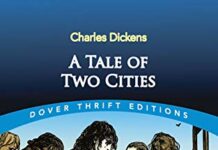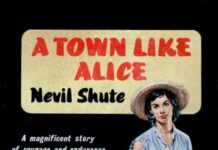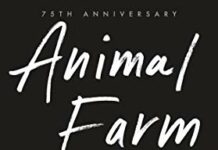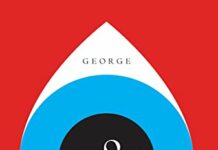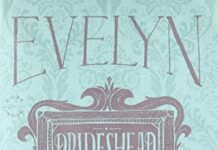
Ebook Info
- Published: 1996
- Number of pages: 262 pages
- Format: Epub
- File Size: 4.23 MB
- Authors: Carlo Collodi
Description
Pinocchio, a wooden puppet full of tricks and mischief, with a talent for getting into and out of trouble, wants more than anything else to become a real boy
User’s Reviews
There is no Editorial Review for this book
Reviews from Amazon users, collected at the time the book is getting published on UniedVRG. It can be related to shiping or paper quality instead of the book content:
⭐ One of the first things I noticed about this book was Pinocchio’s awful behavior. He bites Gepetto’s wig off and then gets Gepetto arrested. He even kills what appears to be the original Jimminy Cricket in Chapter 4. My goodness!After Gepetto gets back to feed and clothe the hungry Pinocchio, Pinocchio promises to be a good boy and go to school. Gepetto doesn’t have much money, so he sells his own coat for Pinocchio to have a school book. In an act of poor judgement, Pinocchio trades the book to see a puppet show, and that’s where the adventure begins.Pinoccho’s fantastic journey is creative and fun, despite obvious continuity problems. Gepetto is the one that names Pinocchio, but every character in the book seems to magically know the puppet’s name beforehand, without even having to ask. I don’t understand. It’s not like Pinocchio is famous or anything, unlike what the Disney film portrays.It should also be noted that Pinocchio can’t read a poster, but is somehow able to read a gravestone, with no schooling whatsoever taking place between the two events.Do these continuity flaws distract from the literary merit of the tale? Absolutely not. We see little Pinocchio, with his clothes of paper and hat of bread, delving into (and soonafter repenting from) the same common misdeeds, not unlike the people Israel of the Old Testament. He is thrown in jail, forced to be a watchdog, turned into a donkey, and even hanged. A blue-haired fairy saves him over and over again, and eventually he becomes a real boy.One of my favorite things about the book is its discouragement of laziness. Pinocchio asks a guy pulling a cart for money, and the guy says, “I’ll gladly give you money, if you help me pull this cart.” Pinocchio claims such a task is beneath him, so the man adds something along the lines of, “Why don’t you eat a few slices of your pride to fix that hunger problem of yours.”This book is extremely creative and encourages a strong work ethic. I can see how it inspired such a famous film. I hate the cover though…the artwork is way too Disney-ized and doesn’t match the illustrations in the book at all. Spend a few extra bucks to get a better cover, unless you’re ultra-cheap (like me).
⭐ This is a classic children’s book. It is brilliantly illustrated and makes for great reading enjoyment both by a parent and by an older child. I would recommend it.
⭐ Difficult language but classic story. Read to grandchildren in preparation to watch disney movie
⭐ This edition of Puffin Classics portrays the true story of Pinocchio originally written in Italian. I’ve seen and skimmed other books in English before and none of them truly tell the original story of how it was written in Italian.
⭐ This classic version of the timeless story was a very good one; easy to read and great for the class I needed it for.
⭐ Thanks!
⭐ Of course you already know the story of Pinocchio, right? Who doesn’t? Millions have been charmed by the story of the naughty puppet that wanted to become a real boy. His adventures are hardly new, as Pinocchio is in turn carved by Geppetto, rebellious against his father, disobedient to the good fairy, victimized at the hands of the deceitful cat and fox, changed into a donkey, rescued with his father in the whale, and eventually becomes a Real Boy.But have you read the Original Pinocchio? Most people do not know that there are two versions of Pinocchio. One is the simplified version that Disney has given us, the version most people are familiar with. The other is The Real Thing, The Original. Along-side The Real Thing, the simplified Disney version is like Pinocchio the puppet – charming, but wooden and simple. The Real Thing, however, is like Pinocchio the real boy – charming, and full of life. This edition by Carlo Collodi is that Real Thing.Although story of Pinocchio is a tale known to nearly every speaking child, it was first written in Italian. Written by Carlo Lorenzini under the pseudonym Carlo Collodi, it dates back to 1883, when it was serialized in a newspaper and then published as a book with huge success. The 1892 English version was equally well received, but it was the 1940 Walt Disney cartoon that gave Pinocchio the legendary status it enjoys today. Only one problem: Disney took short cuts. Collodi’s original story has a richness and charm unmatched by Disney. Collodi’s Pinocchio is not about a loveable puppet, but about a bratty puppet who needs to learn an important moral lesson about responsibility. And it resonates with slapstick humour that even Disney cannot equal.Take the first paragraph: “There was once upon a time … A king! My little readers will shout together. No, children, you make a mistake. Once upon a time there was a piece of wood.” Collodi goes on to relate how this piece of wood is first owned by a carpenter called Mr. Antonio Cherry. When his friend Mr. Geppetto comes to visit, the wood causes a great fight between the two friends by talking and calling Geppetto his hated nickname of Polendina. Geppetto is convinced it is Antonio who is doing the name-calling: “They seized one another’s wigs, and even hit and bit and scratched each other. At the end of the fight Geppetto’s yellow wig was in Mr Antonio’s hands, and the carpenter’s grey wig between Geppetto’s teeth. `Give me my wig!’ said Mr Antonio. `You give me mine, and let us make a peace treaty!’ So the two little old men, each taking his own wig, shook hands, and promised to be good friends forever.” But moments later, the fighting and name calling resumes (“Blockhead!” “Donkey!” “Ugly monkey!”. When peace is restored, with honours even, “they shook hands again, and vowed to be good friends for ever. Then Geppetto took the piece of wood and, thanking Mr Antonio, went limping home.” And so that’s how Geppetto ends up with the wood that later became Pinocchio.This is just a small taste of the sparkling and rich humour that is largely absent from most contemporary renditions of this famous tale. Taking their cue from Disney, most modern stories have retained Collodi’s story-line, but lost the delightful humour. The Original is darker in tone than the simplified version (assassins try to murder Pinocchio and leave him swinging from a tree, and Pinocchio’s threatened punishment of death for failing to take his medicine is announced by the appearance of rabbit undertakers) , but also has a wealth more action, excitement, and humour. As long as you’re only familiar with the simplified version of Pinocchio, you’ll think of Pinocchio as a wooden and old story for little kids. But anyone who is familiar with The Real Thing, The Original by Carlo Collodi, knows that just like Pinocchio himself, the Real Pinocchio story is in the end no wooden puppet, but a living and breathing classic. – GODLY GADFLY
⭐ This is not Disney’s watered-down and water-logged *Pinocchio* — this is the book that has the real stuff, and if children like the Disney movie, it’s because they’re getting a hint of the wonders of Collodi’s book.First: my five year old insisted I read this book to him twice in a row. Yes, I left out the part where Pinocchio actually bites off the paw of a cat and spits it out, but my boy revelled (from the safe distance of bed and sippy cup in hand) in the assassins who pursue Pinocchio, try to kill him, and leave him swinging from a tree. The incidents in this book are highly evocative: a little girl announces that all the people in a house are dead (she included); rabbit undertakers appear when Pinocchio won’t take his medicine; Pinocchio is almost fried as a fish (and drowned, and hanged, etc.). There’s a talking cricket, but he’s annoying and, happily, does *not* burst into song.Second: This book centers around dream-logic. The book makes mechanical gestures towards cause and effect, but it really works the way a child thinks and the way a child worries — it reassures a child that not everything that happens is reasonable. Perhaps Collodi meant this book to be moralistic — certainly there are lessons constantly to be learned. But that the least of this text: this is a story about a boy who can’t quite be a boy because he’s naughty and disobedient, and he finds it isn’t easy *not* to be naughty. Grown-ups have all sorts of rules, and a lot of them don’t make much sense. After all, we all come into this world not yet human, and we all struggle to figure out what is expected of us.The illustrations are are pleasing and plentiful, and I know it will only be a matter of time before my five year old asks for the story again. I’ll be glad to read it. The worth of the tale is far greater than the worth of the simple (but good) morals it contains.
⭐ No question about it that this story is enduring and popular because it speaks innocently into the heart of every human being. Clearly the puppet Pinocchio in here reflects the fate of a child or a person who obstinately takes only his own way and refuses to heed the advises of wisdom, but who would end up never without a sweet remorse. The theme is developed in an active and playful way and sometimes in a tedious way. Its plots are as tenacious as a rascal, too unwilling to explore other ways of presenting a lesson or an experience. The lines drawn between good and evil are too hard and fast, and can be overly childish and even disappointing compared with other classic children’s stories. But of course this one written by Collodi (the original creator) is my favorite among other many versions that I had read or seen. An enjoyable read.
⭐ Both my 8 yr old and 6 yr old love this book. They couldn’t put it down. They definitely enjoy it much more than the revised Disney version that they read before. The illustrations inside are simple but very attractive to the kids. With the excitement I saw from my children, I am more convinced that children are more benefitted from original version than the simplified work, or usually defined as “watered down”, when reading classic literatures.
Keywords
Free Download Pinocchio (Puffin Classics) in Epub format
Pinocchio (Puffin Classics) Epub Free Download
Download Pinocchio (Puffin Classics) 1996 Epub Free
Pinocchio (Puffin Classics) 1996 Epub Free Download
Download Pinocchio (Puffin Classics) Epub
Free Download Ebook Pinocchio (Puffin Classics)
